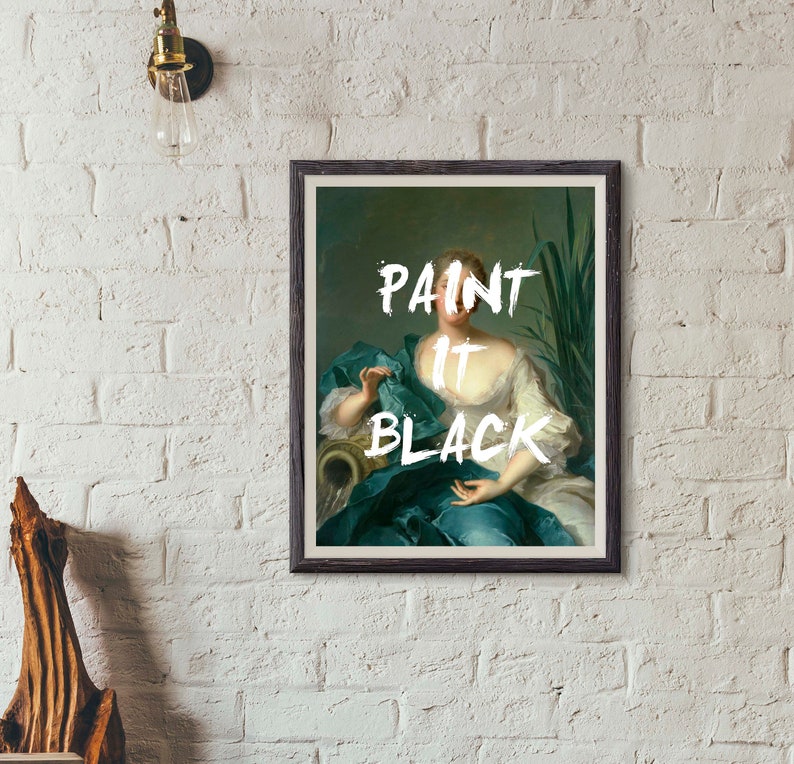

“We play pop art with standard group equipment,” Townshend deadpanned to Melody Maker at the time.
#Lyrics for paint it black mod
“Anyway, Anyhow, Anywhere,” the band’s May 1965 second single, accordingly approximated the pinned-pupil aggression and bluster of The Who’s live set and the demeanor of their mod fan base, but also aped the sensationalist flash and immediacy of a particular strain of pop art, with its combustible tracery of Morse-code feedback: Roy Lichtenstein’s Whaam! set to music.

Invoking Metzger’s auto-destructive ethos made the trashing of The Who’s equipment a legitimate art gesture in theory, even if some cynical journos and horrified musos remained resolutely unconvinced. In Before I Get Old: The Story Of The Who, Dave Marsh contends: “Townshend, like Lennon and perhaps Davies, displayed a thorough familiarity with contemporary artistic theory, which can easily be seen in his immediate application of ideas derived from Blake’s pop art paintings… and in the use of the auto-destructive technique…”


Whether or not guitarist/songwriter Pete Townshend diligently took notes when attending a lecture given by auto-destructive artist Gustav Metzger at Ealing Art College, he certainly talked a good game. In mid-60s Britain, no one joined the dots between art and music more assiduously than The Who, bedecked in the arrows and roundels of their hi-vis pop art regalia, adapting the flags and medals of a crumbling empire to their own symbolic, sartorial, and gestural ends. The Who: “We play pop art with standard group equipment” Perhaps it’s safest to say that, in the mid-to-late 60s, the artistic impulse in pop manifested itself as a heightened awareness of presentation and iconography, a superabundance of imaginative (and/or pictographic) lyrics, a devotion to musical and/or lifestyle experimentation and the use of recording studios as a means of constructing sonic canvases. However, care should be taken not to read too much significance into this rite of passage as a failsafe formula. The inference is that art schools indulged and empowered some of rock’s most original thinkers, who blossomed by design or default in a laissez-faire, bring-your-guitar-to-lectures environment among a coterie of intellectuals. Several of the era’s prime movers famously brushed at easels before wielding plectrums: John Lennon (Liverpool College of Art), Ray Davies (Hornsey College Of Art, then Croydon Art School for its film and theatre programme), Eric Clapton (Kingston College Of Art), Keith Richards and founding Pretty Thing, Dick Taylor (Sidcup Art College), Pete Townshend and Ronnie Wood (Ealing Art College, also attended by Freddie Mercury and future Bonzo Dog lynchpin, Roger Ruskin Spear), and Syd Barrett (Camberwell College of Arts), to name a handful. The birth of art rockīy common consensus, British art schools in the late 50s and early 60s served as hothouses of musical creativity. Listen to the best art rock songs on Spotify. A closer fit would be “music that tends to have experimental or avant-garde influences, emphasizing novel sonic texture” – the first interpretation that pops up if you conduct even the laziest Google search for “art rock” while paying homage to Yoko Ono’s 1966 art film, No.4 (Bottoms).


 0 kommentar(er)
0 kommentar(er)
